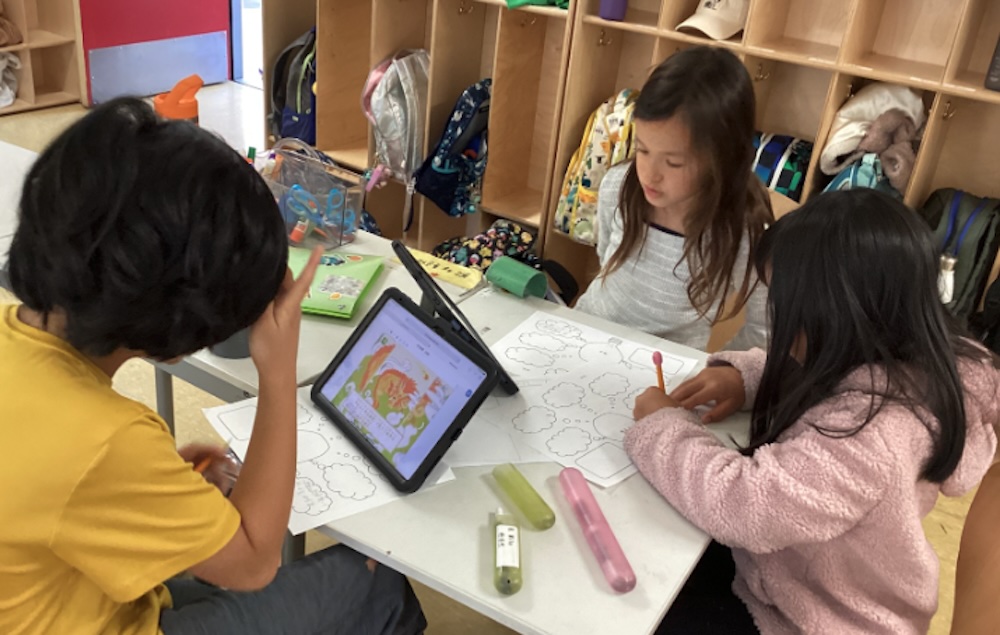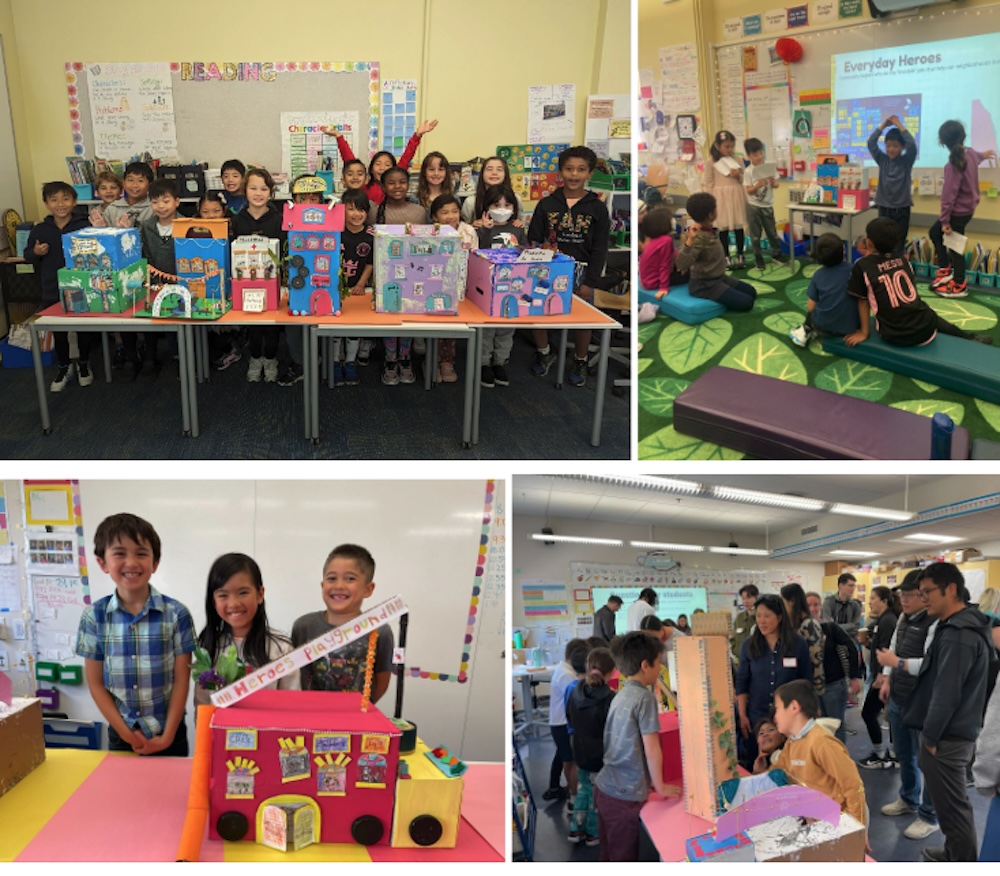Here are a selection of quick second grade teacher recaps from Lower School Head Kimberly Kaz’s newsletters this year to give a peek into the second grade classrooms in action.
From Jindan Laoshi’s Writer’s Workshop

Our enthusiastic second-grade students are embarking on an exciting writing project titled, ‘The Story I Recommend.” In small, collaborative groups, students who selected the same story are working together to craft engaging summaries of their story’s beginning, middle, and end for the first paragraph. In the second paragraph, they will thoughtfully discuss and articulate the compelling reasons why they recommend the story. This project not only hones their writing skills but also fosters teamwork and a love for literature.
From Ms. Bell and Ms. Reid’s Classrooms

Second Graders finished their San Francisco projects and presented all of their hard work to their grown-ups at the Learning Celebration! They talked about their unsung hero, the community space they made for their unsung hero, and reflected on what it was like working on a team.
